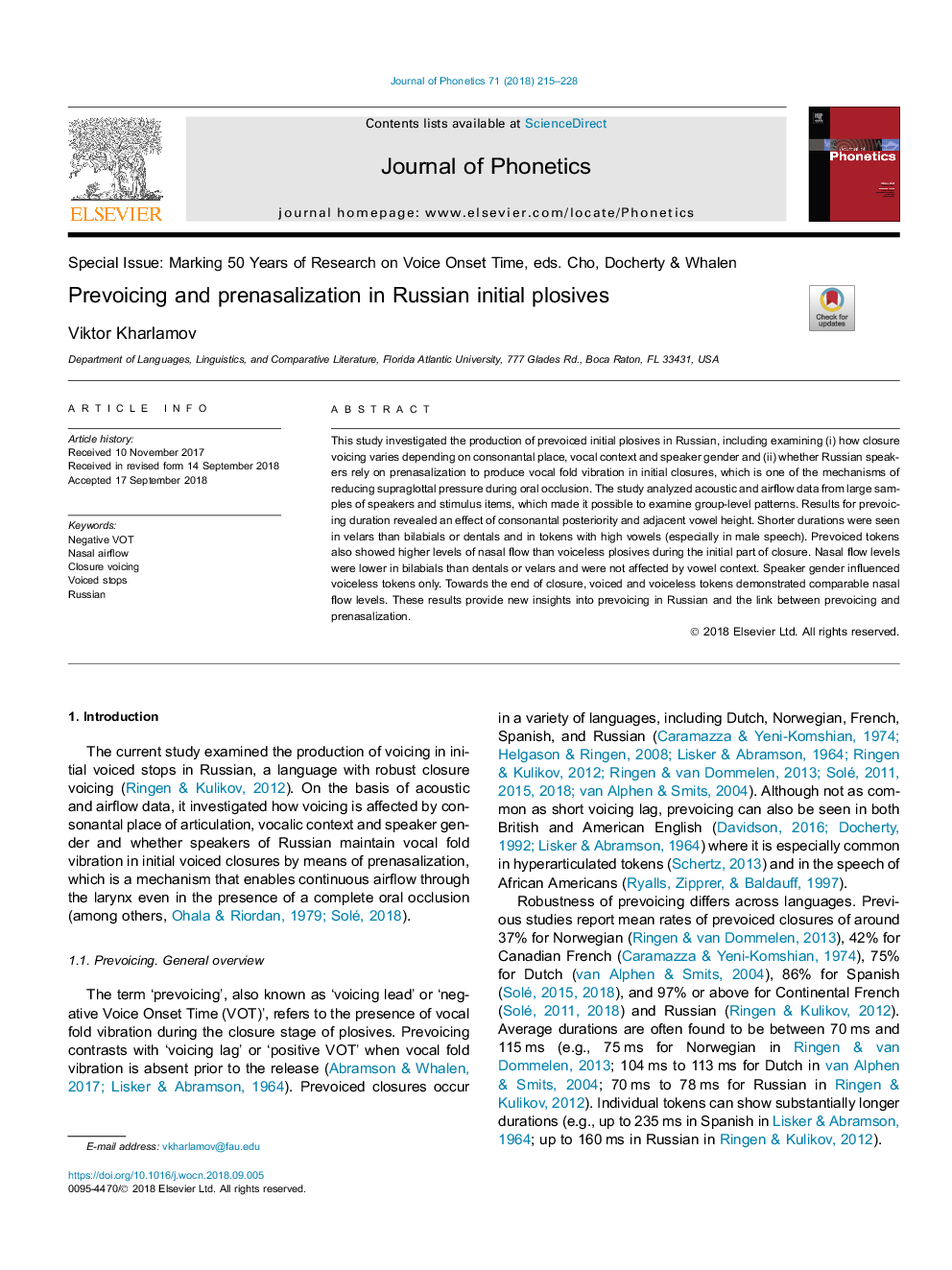| Article ID | Journal | Published Year | Pages | File Type |
|---|---|---|---|---|
| 11005579 | Journal of Phonetics | 2018 | 14 Pages |
Abstract
This study investigated the production of prevoiced initial plosives in Russian, including examining (i) how closure voicing varies depending on consonantal place, vocal context and speaker gender and (ii) whether Russian speakers rely on prenasalization to produce vocal fold vibration in initial closures, which is one of the mechanisms of reducing supraglottal pressure during oral occlusion. The study analyzed acoustic and airflow data from large samples of speakers and stimulus items, which made it possible to examine group-level patterns. Results for prevoicing duration revealed an effect of consonantal posteriority and adjacent vowel height. Shorter durations were seen in velars than bilabials or dentals and in tokens with high vowels (especially in male speech). Prevoiced tokens also showed higher levels of nasal flow than voiceless plosives during the initial part of closure. Nasal flow levels were lower in bilabials than dentals or velars and were not affected by vowel context. Speaker gender influenced voiceless tokens only. Towards the end of closure, voiced and voiceless tokens demonstrated comparable nasal flow levels. These results provide new insights into prevoicing in Russian and the link between prevoicing and prenasalization.
Keywords
Related Topics
Social Sciences and Humanities
Arts and Humanities
Language and Linguistics
Authors
Viktor Kharlamov,
